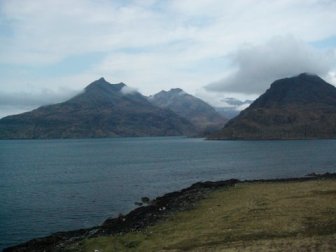
Hot spots such as the Iceland plume can cause ripples hundreds of metres high to spread across the Earth's surface, according to the latest research at the University of Cambridge. The 'hot blob' hypothesis may lay to rest one of geology’s oldest mysteries – why rapid sea level changes take place when there are no waxing and waning polar ice sheets.
Geoscientist Online, 25 June 2010 'Paleogene Scotland went up and down like a geological yo-yo, some 500 metres up and down, within about a million years' says Dr Bryan Lovell, the Society's new President.
'It appears to be caused by something deep within the Earth, moving sideways - almost like rats running underneath a carpet'.
In his Presidential Address to the Geological Society, published in the July edition of the
Journal of the Geological Society, Dr Lovell suggests that convection currents in the mantle are responsible for changes in sea level which have previously been ‘one of the classic unsolved problems in geology’.
The Cambridge team studied the effects of the Iceland plume – a hotspot beneath Iceland responsible for the high level of volcanic activity on the island. Valuable data obtained from oil exploration, made freely available to the researchers, suggests that a 'blob' in the convecting mantle caused a pulse beneath the North Atlantic 55 million years ago, which raised and lowered the land surface and the sea floor in a rippling effect.
'The hot blob would have spread out from the centre of the hot spot rather like a doughnut', says Dr Lovell. The resultant changes in relative sea level have been observed in layers of 55 million-year-old mud and sand deposited on the flanks of ancestral Scotland.
Although scientists are confident that hot blobs exist in the mantle, evidence for the ‘ripples’ at the Earth's surface has been hard to obtain. Both the Cambridge team, led by Dr Nicky White, and a team at Edinburgh University led by Professor John Underhill have worked on the mountains of oil-industry data that hold the key.
‘The uplift of early Scotland at 55 Ma is the specific basis for the hot blob model’ says Dr Lovell. ‘That uplift also gave rise to the sandstones that provided the reservoir for four billion barrels of oil at Forties Field. There is no way we could have mapped these important areas without the oil interest’.
This suggests that there may be other undiscovered examples of the effect, and that it could be taking place now.
'We should be looking at other areas of unexplained surface movement, and whether they are the result of hot blobs too. We think this is a natural effect of mantle convection, so there’s no reason to think it isn’t happening all the time, even now’.
The research may finally put to rest one of geology’s great unsolved problems – why rapid sea level change takes place in interglacial periods. The question of sea level change puzzled the French ‘father of modern chemistry’, Antoine Lavoisier, who in 1789 observed evidence for ‘a kind of ebb and flow requiring several hundred of thousand of years for completion’, but was not able to guess at its cause.
‘I’m delighted that we have what appears to be a decent geophysical explanation for such a longstanding and significant geological problem’ says Dr Lovell. ‘I hope we’ll be able to collect more observations from the geological record that will explain otherwise cryptic features of the Earth’s mantle’.
The study highlights the importance of collaboration between the oil industry and British universities. ‘It’s a way of working which has led to the creation of great financial and intellectual wealth’, says Dr Lovell, who has worked for BP Exploration as well as in academia. ‘The Geological Society epitomises and fosters this cooperation, which is a significant national asset’.